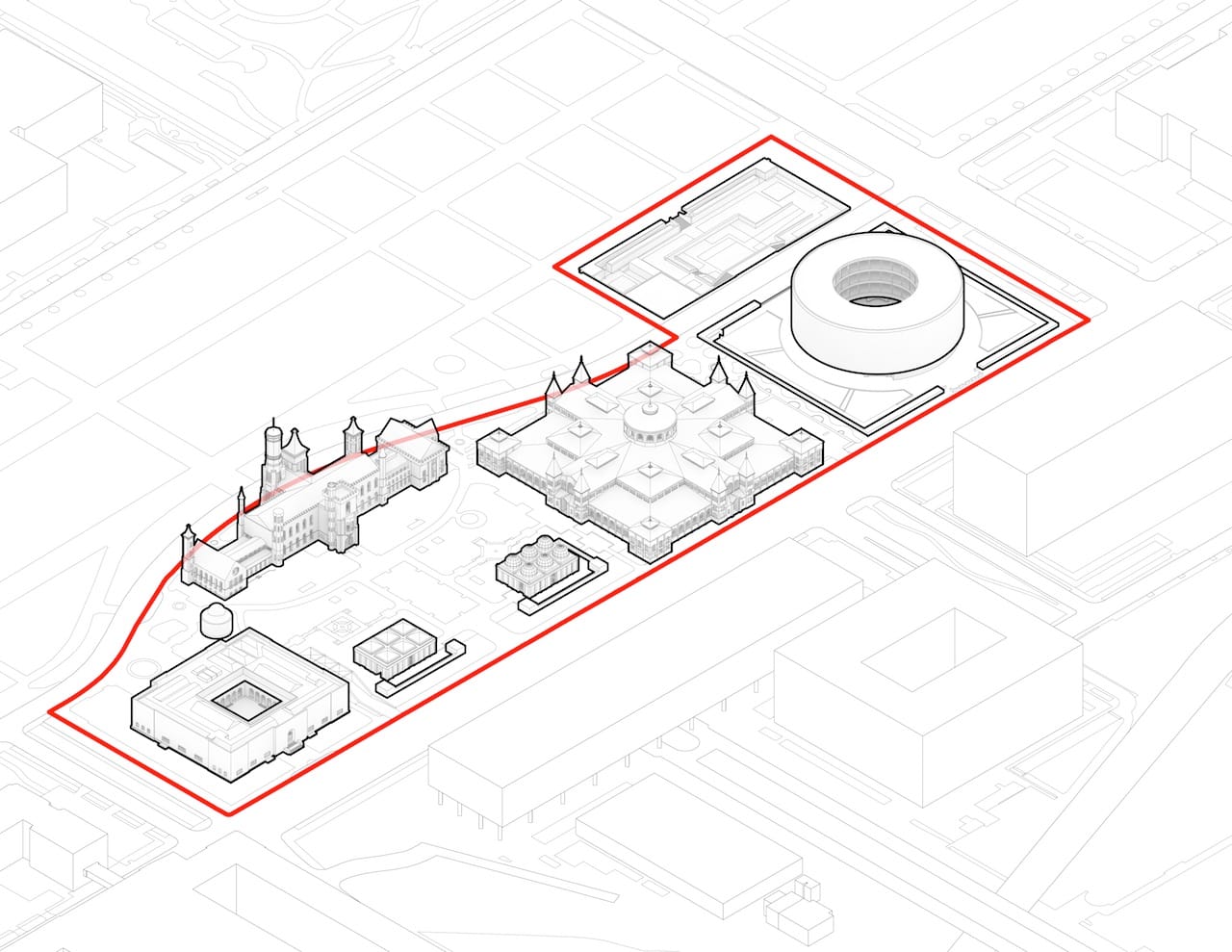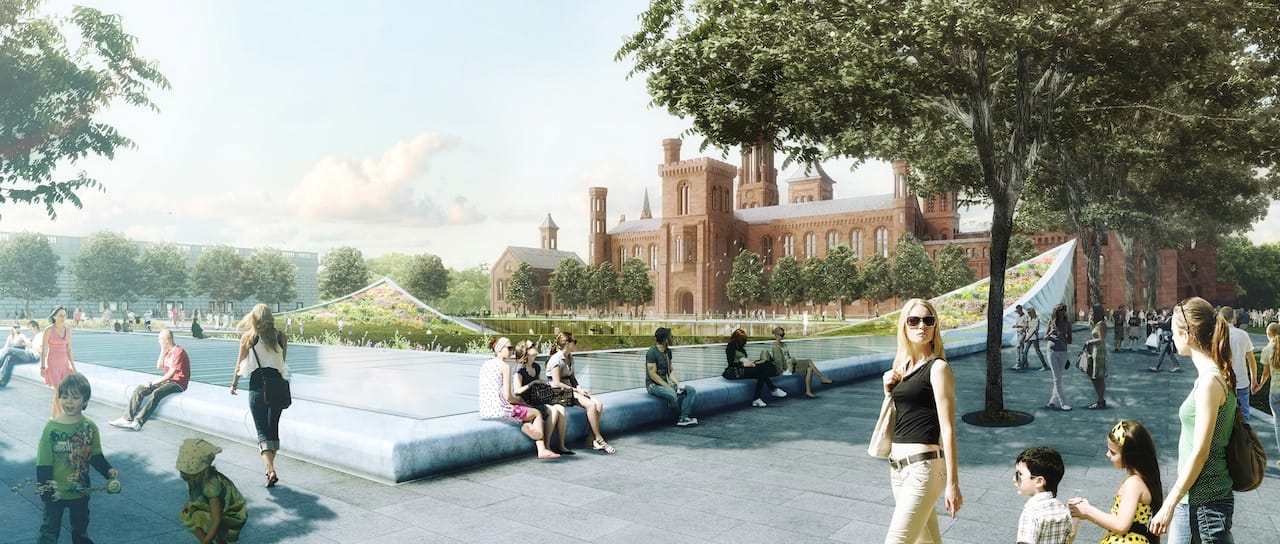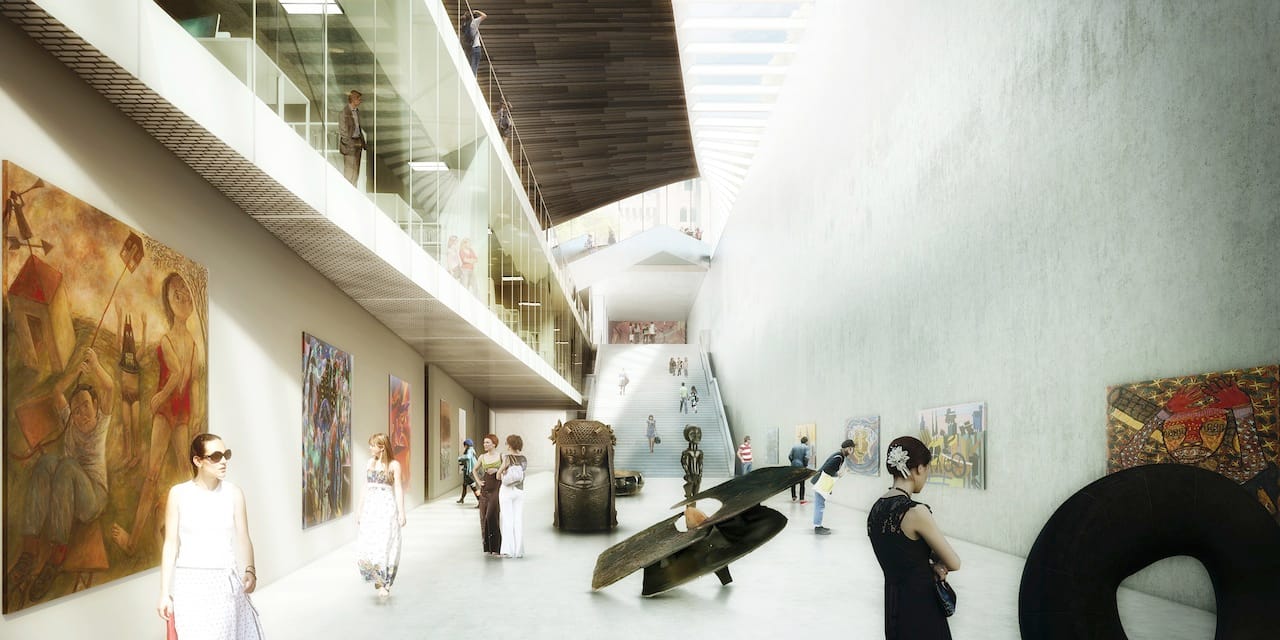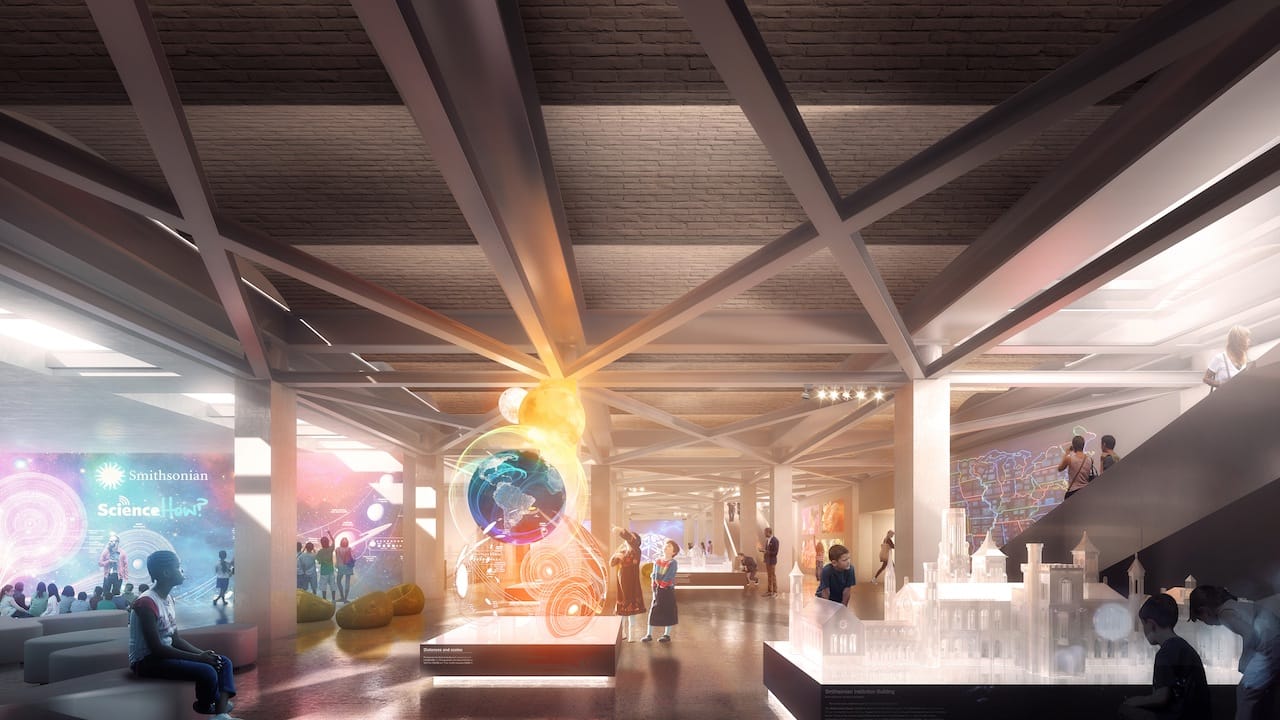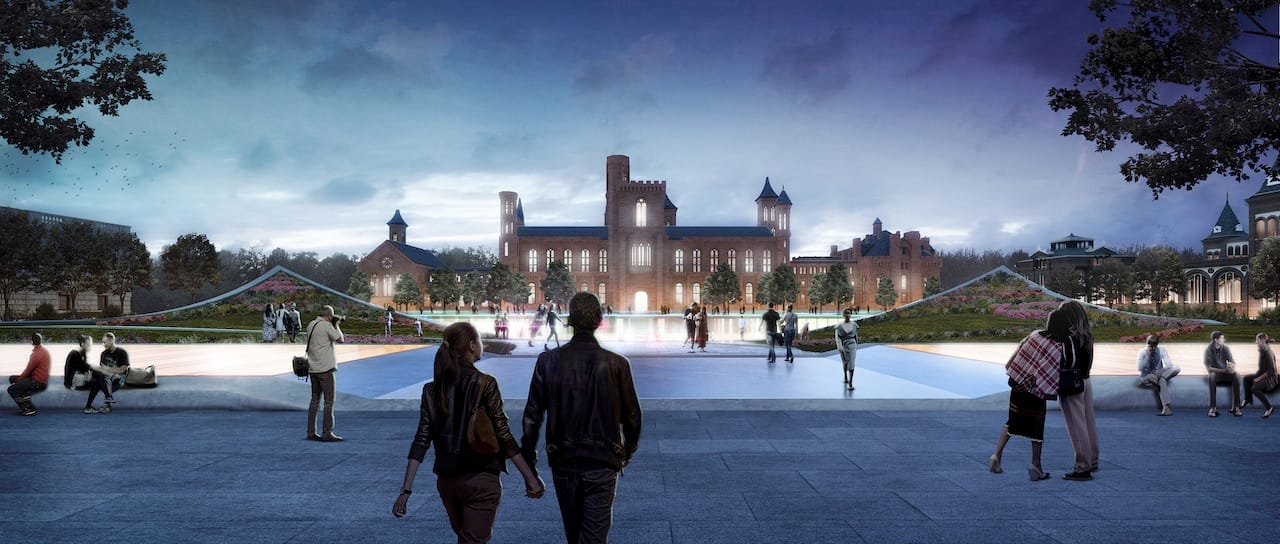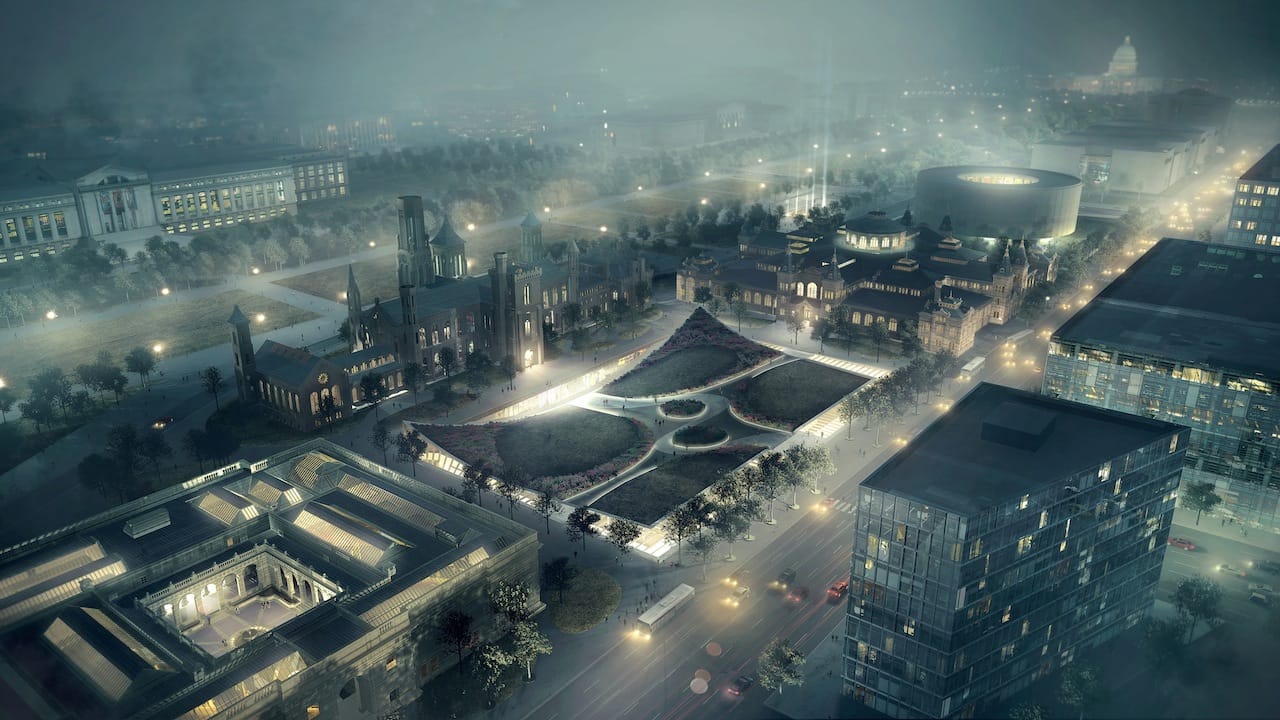Smithsonian Plans $2 Billion Overhaul
Leaking roofs. Bad plumbing. Through-the-roof electricity bills. We've all experienced them, and the 168-year-old Smithsonian Institution is no different. This week, it announced a $2 billion dollar plan to bring its museums and gardens into the 21st century.

Leaking roofs. Bad plumbing. Through-the-roof electricity bills. These are just a few of the reasons why, this week, the 168-year-old Smithsonian Institution announced a $2 billion dollar plan to bring its museums and gardens into the 21st century.
The design by the award-winning Bjarke Ingels Group (BIG) encompasses the buildings on the South Mall along Independence Avenue Southwest from Seventh to 12th streets. Its main goals are to improve and expand visitor services, create clearer entrances and better connections between gardens and museums, and replace crumbling mechanical systems. Provided the National Capital Planning Commission approves, work will roll out from 2016 until 2036 and be paid for with a mix of federal and private funding.
“If we start renovating each building one at a time, we’d miss out on the opportunity to change the visitor experience,” Smithsonian Secretary Wayne Clough told The Washington Post. “We started to think less about the problems we face and more about the opportunities we have.”
The project’s jewel will be the revitalization of the Castle, a sandstone icon of scholarship and history recognizable to most Americans. It housed the Smithsonian’s very first exhibits when it was constructed in 1885, but as the institution evolved into the mammoth web of 19 museums it is today, it was turned into a visitor information center and office headquarters. The original opulence of the Great Hall, where President Lincoln once threw his second inaugural hall, will be restored. The building will also get two new underground levels for visitor services, a café and — naturally — a gift shop.
These will open directly into the Ripley Center and a sleek new green space that will replace the stuffier Einid A. Haupt Garden. The new outdoor area will include skylights offering peeks into underground exhibitions at the subterranean Arthur M. Sackler Gallery (which houses the nation’s largest Asian art research library) and the National Museum of African Art (holding the largest public collection of African art in the United States). Both will get new triangular, glass entrances to replace their current concrete, boxy ones. Additionally, the area stretching from the Freer Gallery of Art to the Hirshhorn Museum and Sculpture Garden will also benefit from better access and visibility.
All in all, there’s seemingly nothing too wild about the renovation plans, which are unsuprisingly bound to strict regulation and historical preservation. “By forging new links between the various technical, programmatic, logistical and curatorial demands, we have created a new landscape of connectivity and possibility,” BIG explained in a press release. “We believe this plan holds the potential to guide the Smithsonian South Mall campus into the future while remaining firmly rooted in its heritage.”
